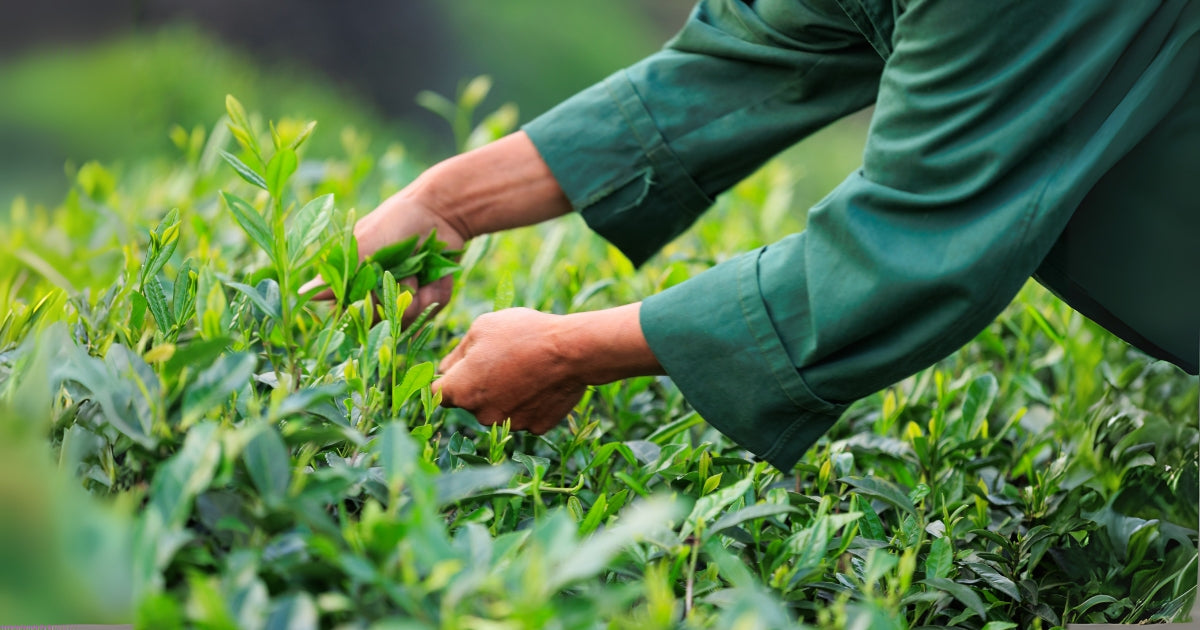Matcha has become a global favorite in recent years. From traditional tea ceremonies to matcha lattes, desserts, and even skincare, the coveted green tea powder has made its way into everyday life worldwide. This rising popularity is well-deserved; matcha powder brings a unique flavor and cultural heritage to the table. But with global demand climbing year after year, Japan is now facing a serious matcha tea shortage. The result is higher prices, pressure on tea farmers, and growing concerns about future matcha supply. Let's take a closer look at why this shortage is happening and what it could mean for matcha lovers in the months ahead.
How Japan Produces Its Signature Green Tea Powder
To understand why Japan is struggling with a matcha tea shortage, it is helpful first to know how matcha is grown and produced. Matcha tea isn't just any green tea; it's made from a specific type of tea leaf called tencha, which undergoes a careful, labor-intensive process before it reaches your tea bowl.
What Makes Matcha Unique?
Matcha comes from the Camellia sinensis plant, like regular green tea, but it follows a much more specialized process. Farmers shade the tea plants for three to four weeks before harvest, which increases chlorophyll and amino acid levels, resulting in matcha's signature vibrant color and smooth, umami flavor. Only the youngest, most tender leaves are hand-picked, typically during the first flush in early May. After harvesting, the shade-grown leaves are steamed to prevent oxidation, air-dried without rolling, and then de-stemmed, producing what's known as tencha. This tencha is then stone-ground into a fine powder, a slow process that can take an hour to make just 30 to 40 grams, helping maintain the tea's natural flavor and nutrients.
Matcha production is primarily concentrated in specific regions of Japan, including the Uji region in Kyoto Prefecture, Nishio in Aichi, and parts of Fukuoka and Kagoshima. These regions are known for their ideal climate and soil conditions, but also have limited growing space and small harvest windows. Combined with the highly manual production methods, these factors naturally limit the matcha supply, especially for higher grades.
What's Driving the Matcha Shortage in Japan
Now that we've seen how involved and time-consuming the matcha production process is, it becomes clearer why supply can be so sensitive to any changes. However, the current shortage isn't solely due to the complexity of production. There are several related factors at play. We'll break down some of the key reasons behind this shortage and explore how each factor is putting additional pressure on Japan's already limited matcha supply.
Growing Global Demand
Demand for matcha, especially high-grade ceremonial grade matcha, has surged globally in recent years. Growing interest in wellness habits, matcha's versatility in both food and drinks, and the influence of tourism have all contributed to this rising demand. According to recent reports, Japan's green tea exports increased by 25% in value in 2024, while tencha prices at Kyoto auctions have soared by around 170% year-on-year. Many long-established, reputable tea farms are struggling to keep up with this rapid global surge. Although overall sales of matcha have nearly tripled, the rising costs and increasing difficulty in sourcing high-quality matcha remain significant challenges for both producers and buyers.
Climate & Agricultural Stress
High-quality matcha is not just the result of expert production; it also depends heavily on an environment that has traditionally supported the ideal conditions for producing the sweet, umami-rich Japanese green tea powder we've come to love. In recent years, however, rising temperatures and record-breaking heatwaves in key tea-producing regions, such as Kyoto, have put this balance under strain. In 2025, some farmers reported harvest volumes dropping by as much as 25% due to heat stress on tea plants. On top of that, erratic weather patterns, including unexpected frosts, prolonged droughts, and irregular rainfall, are climate impact further affecting both the health of the plants and the quality of the tea leaves and raw matcha materials. These shifting climate conditions impact not just the quantity of matcha available but also key quality markers like taste, color, and nutrient content.
Limited Growth & Labor Availability
Matcha is often called green tea powder, but the process of turning fresh tea leaves into the vibrant green powder requires expertise and skill. Premium-quality matcha production in Japan is typically limited to traditional tea-growing regions, such as Uji, Nishio, and parts of Shizuoka, where centuries-old methods are still practiced. However, these regions have limited room for growth, with most farms being small, family-run operations. Expanding matcha production is not straightforward, as newly planted tea bushes take four to five years to mature before they can produce high-quality tencha leaves. Adding to the challenge is Japan's rapidly aging farming population; over 70% of tea farmers are now over the age of 65, and the overall number of tea farmers has declined sharply over the past two decades, resulting in a product shortage. Even when there is demand, scaling production is slow due to labor shortages, limited land, and the traditional use of stone mills, which can only produce a small quantity of matcha powder per hour in harvest season.
Changing Priorities in Japanese Tea Farm
Japan has a long and diverse history with tea, with varieties such as sencha, gyokuro, and bancha making up everyday drinking habits across the country. While domestic tea culture still includes many of these traditional types, recent global food trends have shifted firmly towards matcha tea. With matcha gaining popularity in everything from matcha lattes to desserts, many farmers have begun to focus more on growing tencha, the specific leaf used to make matcha powder. In regions like Kyoto and Uji, farms that once cultivated various types of tea are now focusing exclusively on tencha. This shift isn't just driven by market demand; government programs have been introduced in recent years to encourage farmers to prioritise matcha tea, primarily for export markets. Reports show that tencha production has almost tripled in the last decade, while production of other teas like sencha has gradually declined.
Matcha Shortage: What to Expect in the Future
The global demand for matcha shows no signs of slowing down or supply recovery, as it continues to shine in food trends from drinks to wellness recipes. However, the shortage and price increase are likely to persist for some time, especially for premium ceremonial-grade matcha. Producing top-quality ceremonial matcha from the first flush requires years of careful cultivation, shading, and slow stone grinding, which makes it rare and expensive. To keep up, producers are experimenting with new growing methods, exploring different tea varieties, and even expanding matcha farming beyond traditional regions. Still, balancing growing demand with the time and care matcha requires means the market price surge probably won't drop anytime soon. The most prized ceremonial matcha will remain a special, scarce commodity for the foreseeable future, while lower grades, like culinary grade matcha or premium-grade matcha, may remain more accessible and competitively priced.
What the Matcha Shortage Means for Our Prices and Supply
We’ve been working with the same farm in Japan for over seven years now. It’s a relationship built on trust and shared commitment, and thanks to that, we’re still able to stay stocked, even as matcha becomes harder to source around the world. However, due to rising production costs in Japan and recent changes in tariff policy, we've had to adjust our prices recently.
Lately, we’ve had offers from U.S. resellers suggesting ways to cut corners, mostly by blending Japanese matcha with Chinese matcha to bring costs down. We understand why it happens, but it’s not something we’re willing to do. We believe in staying true to the source, and to the people who grow this tea with so much intention. What you’ll find here is, and will always be, 100% Japanese matcha.








